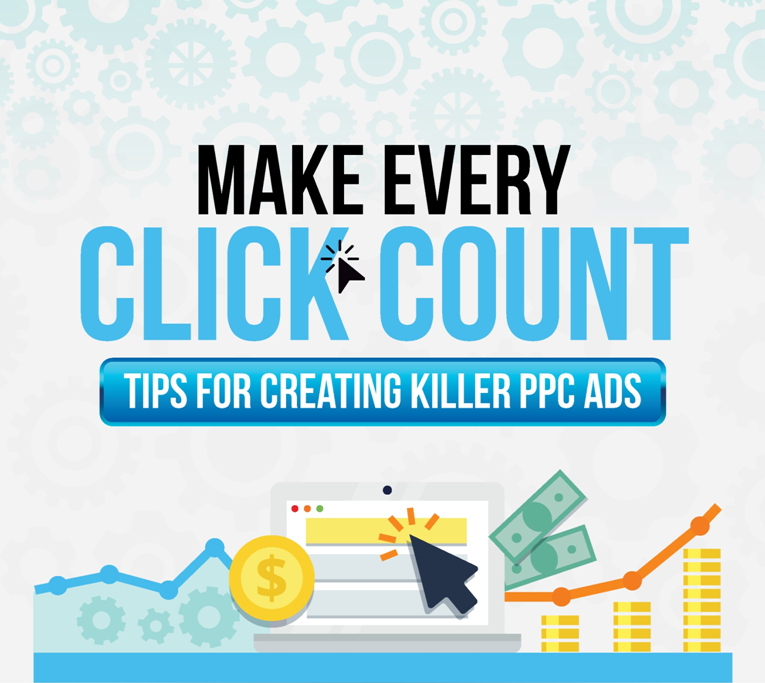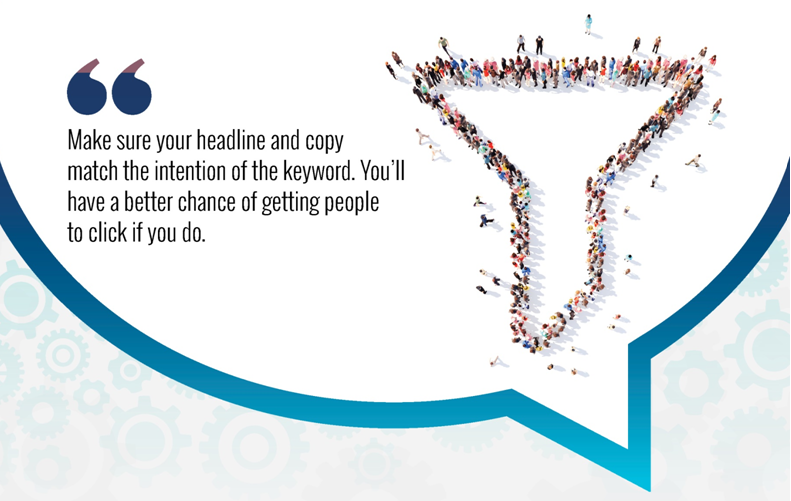
When you create pay-per-click ads, you pay for every click you get. So, it stands to reason that you want to make every click count.
But how can you do that?
The key is to hone your ad creation skills so that your ads:
- Appeal directly to your target audience
- Give people what they need and expect to see
- Persuade them to click through and visit your site
The good news? Even if you don’t think of yourself as a marketing pro, there are some simple tricks you can learn to take your PPC ads to the next level. Here they are.


You probably already know that mobile searches now outstrip desktop services. That means that your PPC ads must be adapted for mobile users if you want to get great results.
Here’s what to do:
- Make your landing pages mobile-responsive so they can be read on any device (Bonus: you won’t have to create special mobile landing pages)
- Add a “click to call” button on your ad
- Use IF functions to add special text and deals for mobile customers. For example, you might offer free shipping on mobile orders.
These simple tweaks to your ad can drive mobile engagement – and sales!

People respond to specificity in ads and headlines. If there are dozens of ways to use your product, or customers get access to millions of email addresses, say that in your headline.
Using numbers adds to your credibility, too. It’s why politicians often reel off a string of statistics when they’re in a debate.
Try adding numbers, percentages, and other stats to your PPC ads. Of course, make sure they’re both accurate and relevant to your target audience. If you do, you’ll see what a difference a number can make in your click-through rate.


If you’re running an AdWords campaign, your headline is likely to be the focus of anybody who searches your keywords. That means it’s got to be snappy, direct, and appealing.
It’s important not to be misleading in your headline. It should be clear what product or service you’re selling.
Originally, AdWords allowed only a few words per line – so there wasn’t room to get fancy. Now, with the new expanded headline format, you can add a few more words. But your goal should still be to get to the point quickly.
Of course, if you’re running a Facebook ad, you have a bit more room. The key thing is to make your headlines persuasive without resorting to clickbait.

The people who see your ads won’t all be at the same place in the buying cycle. Some may be looking for general information to help them solve a problem. Others may be ready to pull the trigger and make a purchase.
Often, you can tell where a customer is based on the keyword they use to search. A customer who searches for general information about pest control might say:
How to get rid of pests
Someone who’s ready to hire an exterminator, on the other hand, might search:
Best termite exterminator in Grand Rapids
See the difference? When you write an ad, you choose keywords to target. Make sure your headline and copy match the intention of the keyword. You’ll have a better chance of getting people to click if you do.

On Facebook, users are accustomed to seeking out images and looking at them first. It’s why visual content gets so much more engagement than plain, written content.
You can increase your clicks by finding a compelling, relevant image to use in your ad. This isn’t the place to use an image that’s unrelated to your offer.
Original images (meaning, not stock images) are best. Photographs, illustrations, and infographics can all get the job done if you use them properly.

Nobody (and I mean nobody) likes a bait and switch. When your ad and your landing page don’t match, it tells people that you can’t be trusted. And considering how essential trust and authority are in marketing, you can’t afford to do anything to undermine the trust you’ve acquired.
In other words, if your ad promotes an offer, it should direct them to a page that promotes the same offer. When the details match, it creates trust and reassures the people who click. That means they’ll be more likely to take the next step, whether that means opting in to your list or making a purchase.
To make it easier, you can even use dynamic text replacement technology to swap out text based on the keyword used to find your ad. That way, you’ll always be sure that your page and your ad are in synch.



You already know that your first “touch” with a potential customer is unlikely to lead to a sale. You may need to connect with them several times before they’re ready to take the leap.
You can use PPC ads on Google and Facebook to retarget people who’ve clicked on an ad and visited your site. Specifically, you can target them based on what they did on your site.
For example, the Facebook pixel lets you track which pages people visit or even which blog posts they read. You can then retarget them with content that you choose based on what they looked at. That increases the chances that they’ll click again – and maybe this time, they’ll buy from you!
You’re going to pay for clicks one way or the other…
That’s the nature of PPC ads, after all. The best thing you can do to improve your CTR and conversions is to dedicate yourself to using these seven tricks to create ads that compel clicks – and ultimately, increase your sales.
